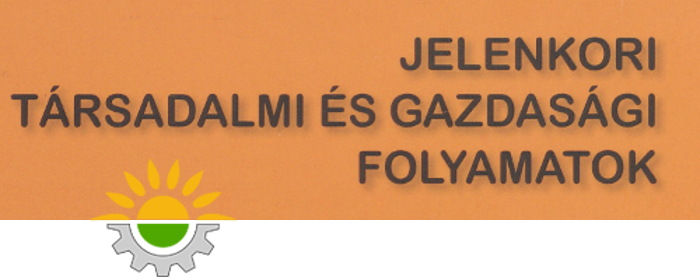Kríziskommunikáció és a vezető: A válságkezelés kulcstényezői
Main Article Content
Absztrakt
A tanulmány célja a vezetői kríziskommunikáció szerepének és hatásainak vizsgálata a szervezeti válságkezelésben. A modern üzleti és társadalmi környezetben a krízishelyzetek kezelésére irányuló hatékony vezetői stratégiák kulcsfontosságúak a szervezetek hosszú távú sikeressége és stabilitása szempontjából. A tanulmány elméleti összefoglalóként vizsgálja a transzparens és hiteles tájékoztatás, valamint a közösségi média szerepét a válságkommunikációban, amelyek az azonnali információáramlás lehetőségével új kihívásokat is teremtenek, mint például az álhírek terjedése. A kutatás hozzájárul a vezetői énmárka és kríziskommunikáció közötti kapcsolat mélyebb megértéséhez, valamint az érintettek bizalmának és hírnevének megőrzéséhez válsághelyzetekben.
Letöltések
Article Details
Hivatkozások
Aguilar Yuste, M. (2021): Leadership and Emotional Intelligence during a Crisis. Revista De Relacio¬nes Internacionales, Estrategia Y Seguridad, 16 (2): 47–60. https://doi.org/10.18359/ries.5619
Akshit S. (2024): The role of emotional intelligence in crisis leadership: effects on employee morale and organizational resilience. International Journal of Advanced Research, 12 (10): 98–119. https://doi.org/10.21474/IJAR01/19626
Alsop, R. J. (2004): Corporate reputation: Anything but superficial – The deep but fragile nature of corporate reputation. Journal of Business Strategy, 25 (6): 21–29. https://doi.org/10.1108/02756660410699900
Appelbaum, S. H., Keller, S., Alvarez, H., Bédard, C. (2012): Organizational crisis: lessons from Lehman Brothers and Paulson & company. International Journal of Commerce and Management, 22 (4). https://doi.org/10.1108/10569211211284494
Benoit, W. L. (1997): Image repair discourse and crisis communication. Public Relations Review, 23(2), 177–186. https://doi.org/10.1016/S0363-8111(97)90023-0
Buhagiar, K., Anand, A. (2023): Synergistic triad of crisis management: leadership, knowledge management and organizational learning. International Journal of Organizational Analysis, 31 (2). http://doi.org/10.1108/IJOA-03-2021-2672
Chilufya C. Chiwisa (2024): The Role of Leadership in Crisis Management: A Literature Review. Journal of Human Resource and Leadership, 9 (3): 48–65. http://doi.org/10.47604/jhrl.2844
Chopra, P. K., Kanji, G. K. (2010): Emotional intelli¬gence: A catalyst for inspirational leadership and management excellence. Total Quality Management & Business Excellence, 21 (10): 971–1004. https://doi.org/10.1080/14783363.2010.487704
Coombs, W. T. (2007): Protecting organization reputations during a crisis: The development and application of situational crisis communication theory. Corporate Reputation Review,10: 163–176. https://doi.org/10.1057/palgrave.crr.1550049
Coombs, W. T. (2010): Parameters for crisis communication. In: Coombs, W. T., Holladay, S. J. (szerk.): The handbook of crisis communication. Wiley-Blackwell. 17–53.
Coombs, W. T., & Holladay, S. J. (2010). PR strategy and application: Managing influence. Chichester, England: Wiley-Blackwell.
Coombs, W. T. (2015): Ongoing crisis communication: Planning, managing, and responding. Sage, Thousand Oaks, California.
Denner, N., Viererbl, B., Koch, T. (2019): A matter for the boss? How personalized communication affects recipients’ perceptions of an organization during a crisis. International Journal of Communication, 13: 2026–2044.
Gaines-Ross, L. (2000): CEO reputation: A key factor in shareholder value. Corporate Reputation Review, 3 (4): 366–370. https://doi.org/10.1057/palgrave.crr.1540127
King, G. Crisis Management, Team Effectiveness (2002): A Closer Examination. Journal of Business Ethics, 41: 235–249. https://doi.org/10.1023/A:1021200514323
Koli, K. (2024): The Role of Social Media in Crisis Communication. ISAR Journal of Arts, Humanities and Social Sciences, 2 (12): 33–40
Lucero, M., Tan Teng Kwang, A., Pang, A. (2009): Crisis leadership: When should the CEO step up? Corporate Communications: An International Journal, 14 (3): 234–248. https://doi.org/10.1108/13563280910980032
Liu, B. F., Iles, I. A., Herovic, E. (2019): Leadership under Fire: How Governments Manage Crisis Communication. Communication Studies, 71 (1): 1–20. https://doi.org/10.1080/10510974.2019.1683593
Maulding, W. S., Peters, G. B., Roberts, J., Leonard, E., & Sparkman, L. (2012). Emotional intelligence and resi¬lience as predictors of leadership in school adminis¬trators. Journal of Leadership Studies, 5 (4): 20–29. https://doi.org/10.1002/jls.20240
Mazey, S., Richardson, J. (2020). Lesson-Drawing from New Zealand and Covid-19: The Need for Anticipatory Policy Making. The Political Quarterly, 91 (3): 561–570. https://doi.org/10.1111/1467-923X.12893
McGuire, D., Cunningham, J. E. A., Reynolds, K., Matthews-Smith, G. (2020). Beating the virus: an examination of the crisis communication approach taken by New Zealand Prime Minister Jacinda Ardern during the Covid-19 pandemic. Human Resource Development International, 23 (4): 361–379. https://doi.org/10.1080/13678868.2020.1779543
Pang, L. L. (2021): Leadership and Crisis Communication During Covid-19: The Case of Brunei Darussalam. Policy & Governance Review, 5 (2): 97–112. https://doi.org/10.30589/pgr.v5i2.388
Pollach, I., Kerbler, E. (2011): Appearing competent: A study of impression management in U.S. and European CEO profiles. The Journal of Business Communication, 48 (4): 355–372. https://doi.org/10.1177/0021943611414687
Rathi, N., Soomro, K. A., Rehman, F. U. (2021): Transformational or transactional: Leadership style preferences during Covid-19 outbreak. Journal of Entrepreneurship, Management, and Innovation, 3 (2): 451–473. https://doi.org/10.52633/jemi.v3i2.87
Sacca F., Selva D. (2021): Women political leaders in pandemic times: comparing Jacinda Ardern’ and Donald Trump’s representation of the COVID-19 crisis. Science. Culture. Society. 27 (2): 8–21. https://doi.org/10.19181/nko.2021.27.2.1
Schoofs, L., Claeys, A.-S. (2021): Communicating Sadness: The impact of emotional crisis communication on the organizational post-crisis reputation. Journal of Business Research, 130 (June): 271–282. https://doi.org/10.1016/j.jbusres.2021.03.020
The Lancet Infectious Diseases (2020): The COVID-19 infodemic. The Lancet Infectious Diseases, 20 (8): 875. https://doi.org/10.1016/S1473-3099(20)30565-X
Tkalac Verčič, A., Verčič, D., Coombs, W. T. (2019): Convergence of crisis response strategy and source credibility: Who can you trust? Journal of Contingencies and Crisis Management, 27 (1): 28–37. https://doi.org/10.1111/1468-5973.12229
Vosoughi, S., Roy, D., Aral, S. (2018): The spread of true and false news online. Science, 359 (6380): 1146–1151. https://doi.org/10.1126/science.aap9559
Woodward, I. C. (2020): Jacinda Ardern and Andrew Cuomo Are Crisis Comms Champions. INSEAD. < https://knowledge.insead.edu/leadership-organisations/jacinda-ardern-and-andrew-cuomo-are-crisis-comms-champions> (2025.02.10.)
World Health Organization (2020): Managing the COVID-19 infodemic: Promoting healthy behaviours and mitigating the harm from misinformation and disinformation. WHO weboldala. <https://www.who.int/news/item/23-09-2020-managing-the-covid-19-infodemic-promoting-healthy-behaviours-and-mitigating-the-harm-from-misinformation-and-disinformation> (2025.02.10.)
